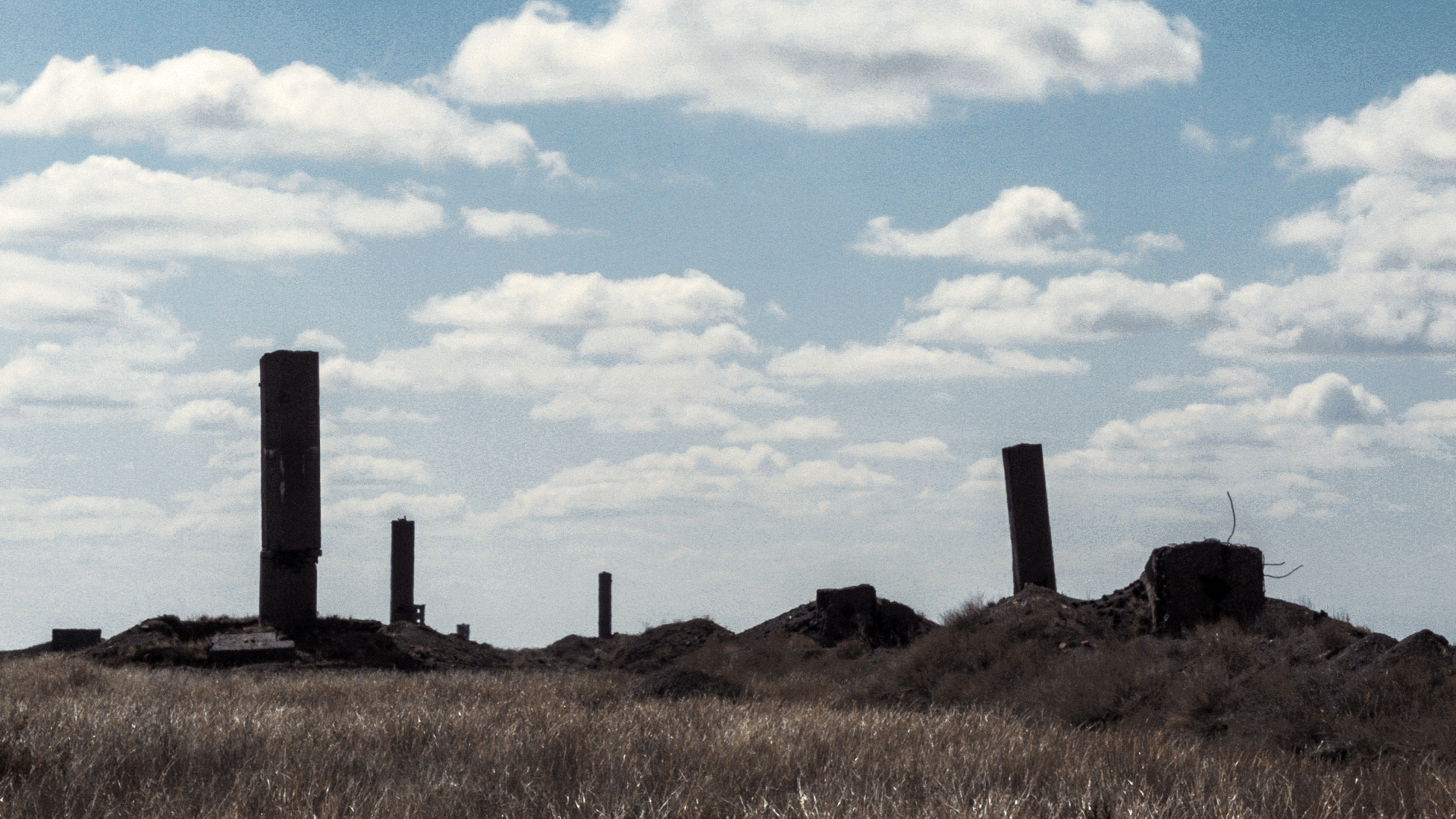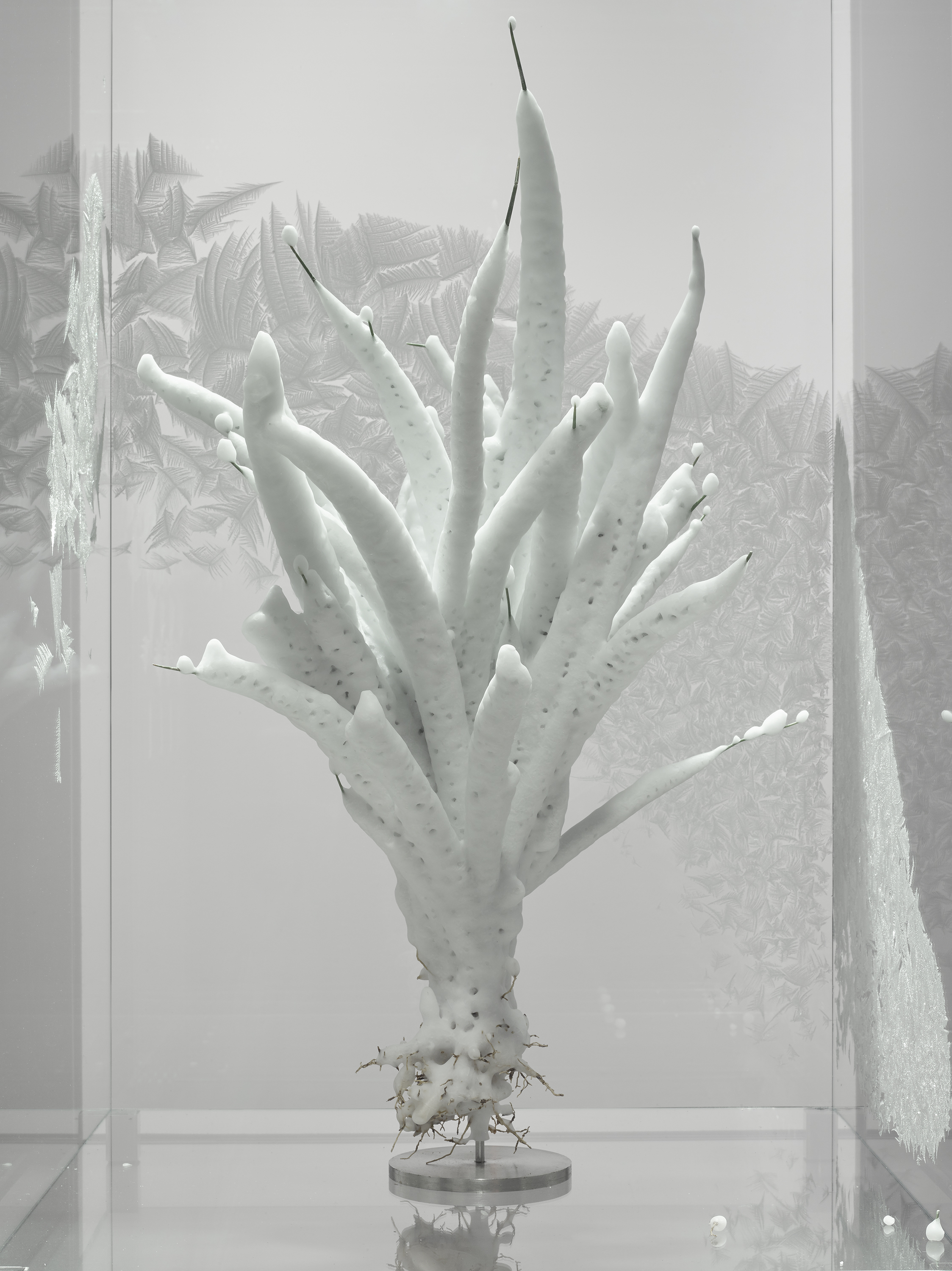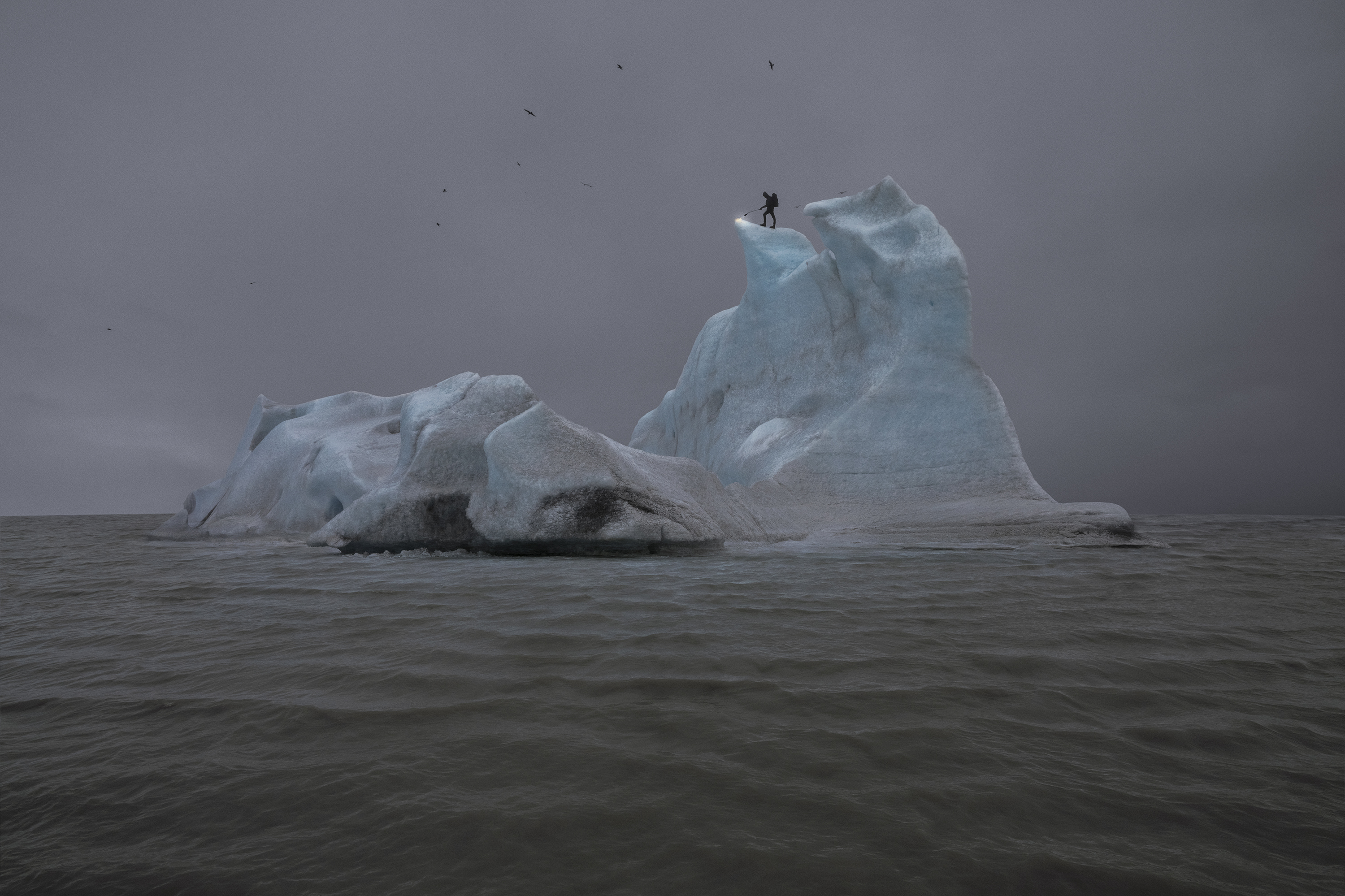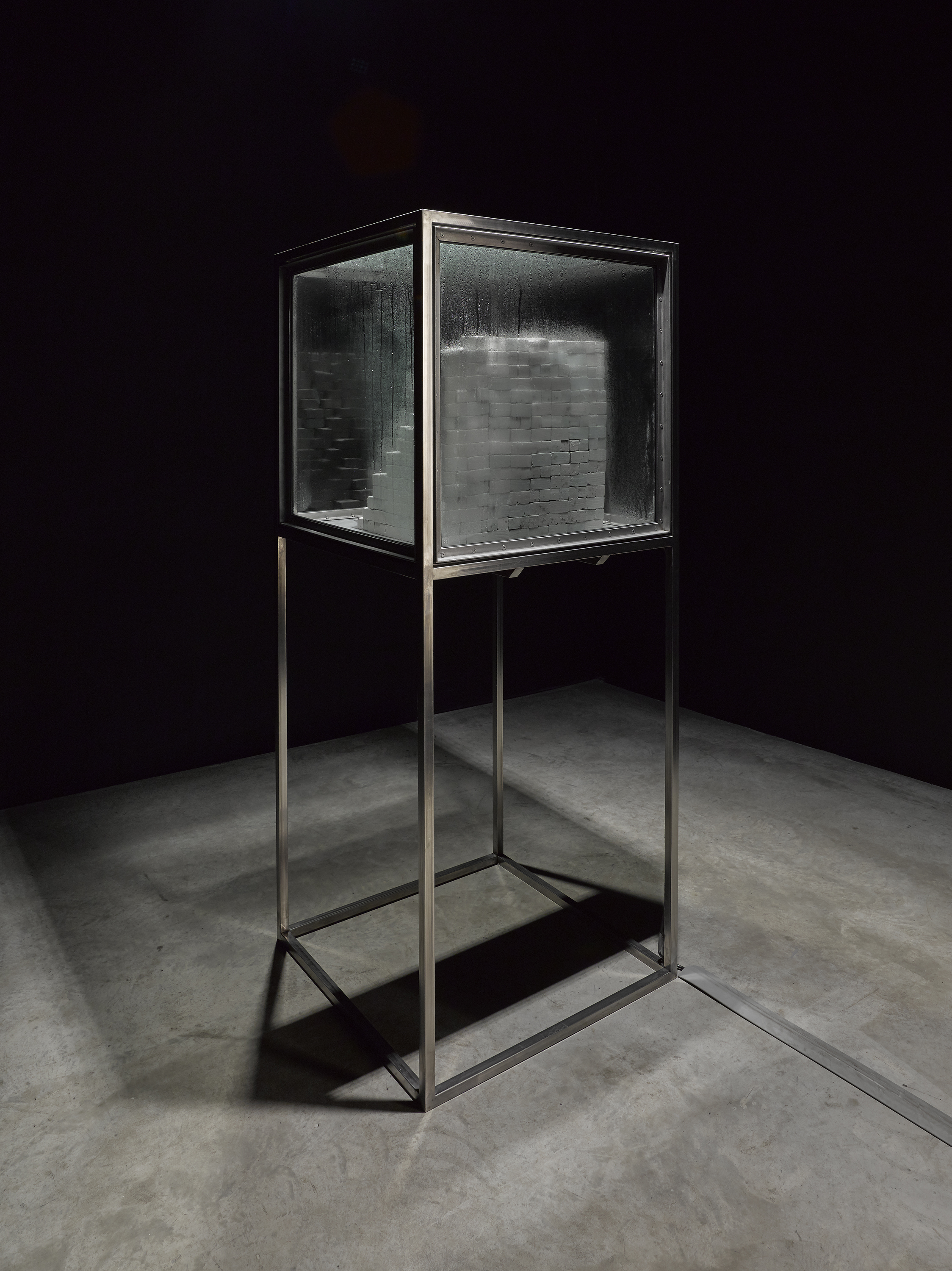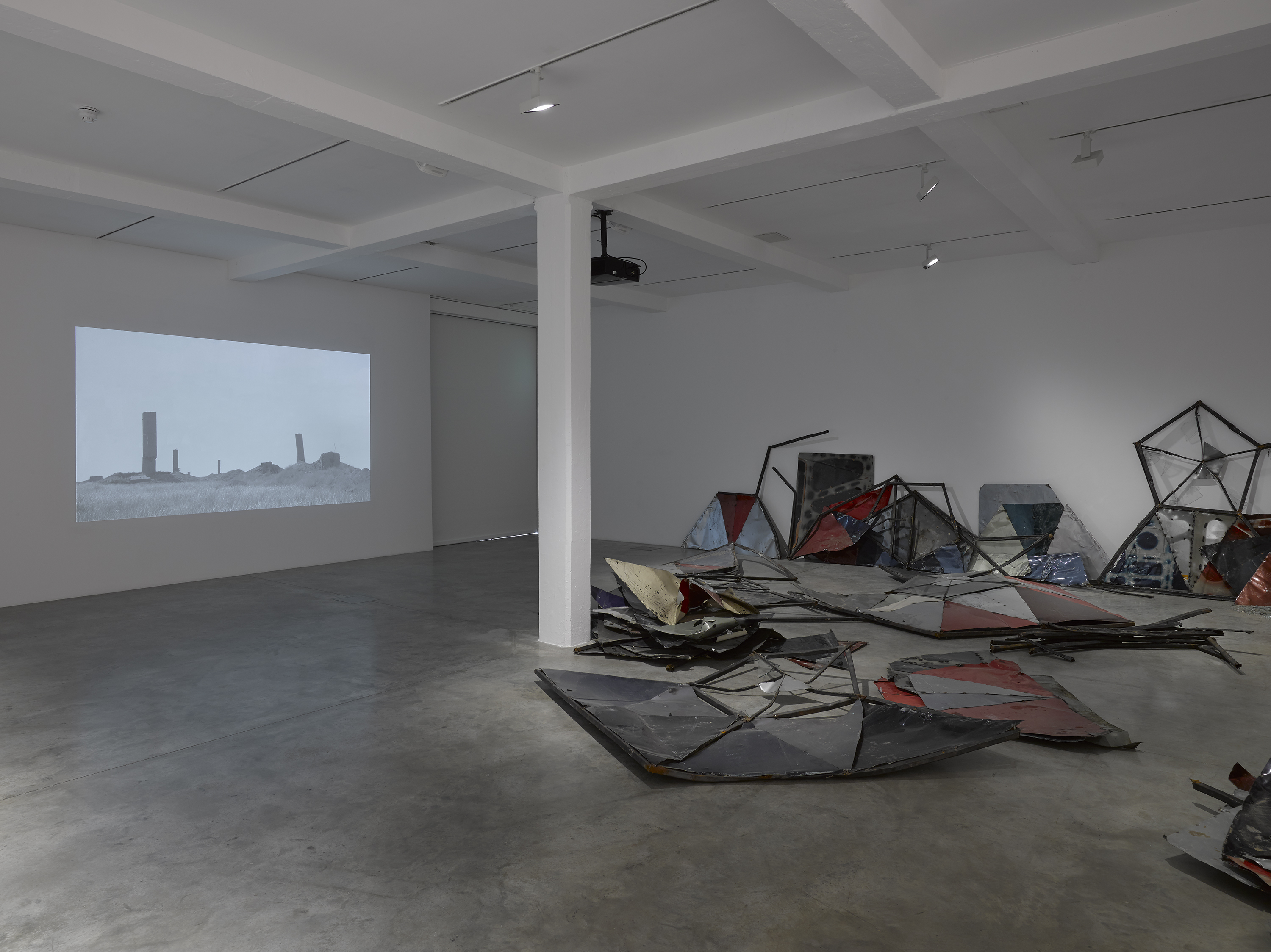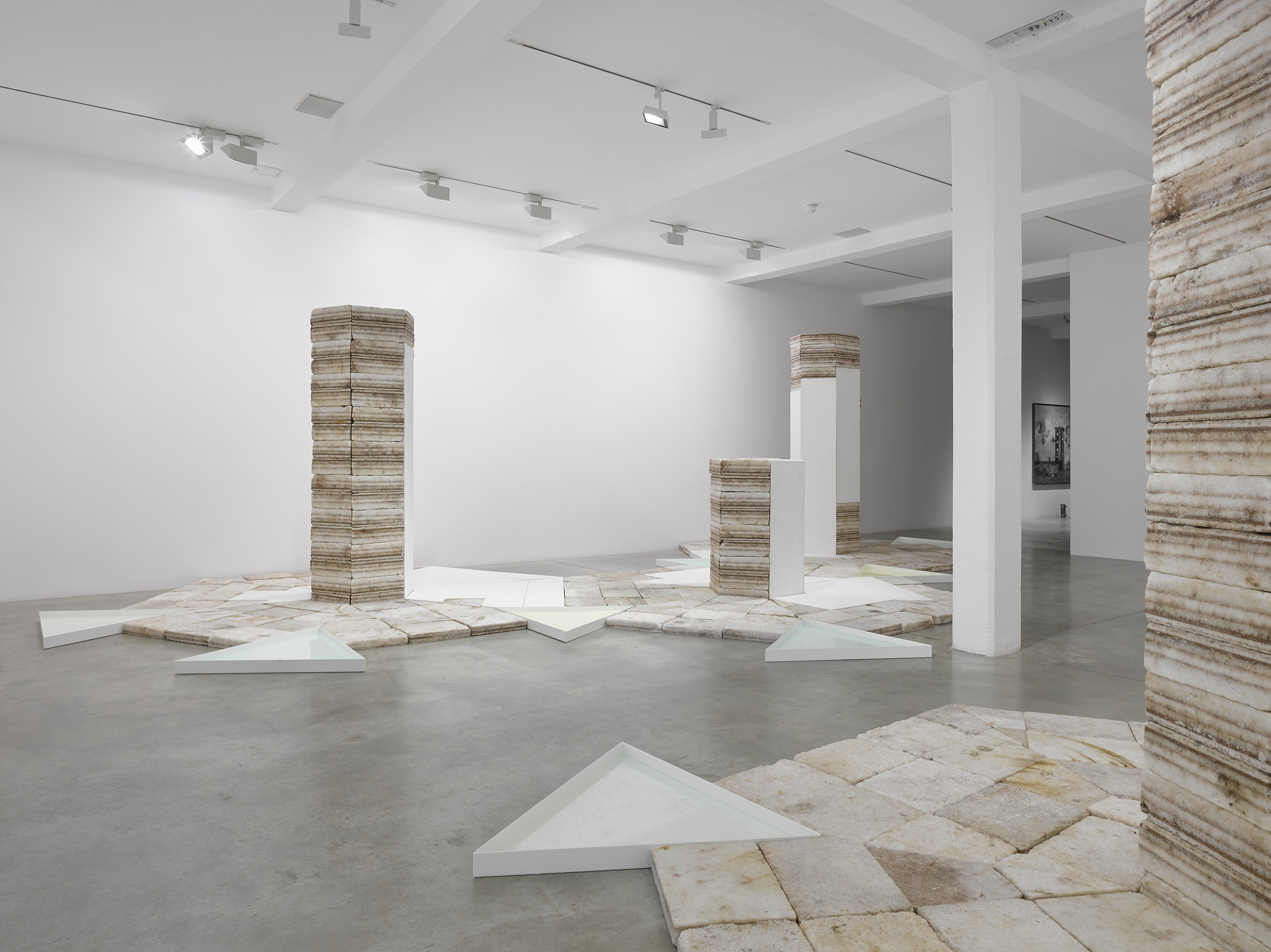A lot of work recently has discussed man’s relationship with machines. It is interesting then, to find an artist exploring the changing rhythm that we have with the natural world, namely; geology, biology, physics, history and archaeology. The artist in question is Julian Charrière, currently showing at London’s Parasol Unit.
Charrière has a broad practice, and this exhibition alone includes installation, sculpture, performance, photography and film. Time connects the different areas of research, the artist looking at the speed of change due to human involvement with the natural world, and also at cycles of past, to present and future. Technology is shown as something that often works against the natural order, relying too heavily on non-sustainable resources and in some cases flat-out destroying parts of it.
The artist is Swiss-French, but currently works in Berlin, and explores many global sites in his work such as Bolivia’s ‘lithium triangle’–lithium being one of the essential ingredients for batteries–and Semipalatinsk, Kazakhstan, which was a site for over 400 nuclear tests by the Soviet Union.
Of course events that concern the planet also concern humanity, but human beings (as physical bodies) aren’t the visible victims here. It’s the planet itself that displays the impact of human interventions, though we know well enough what that means for ourselves further down the line (if we didn’t already, one would gather from this work, we should now).
By removing the impact of these interventions from an individual or local human level, we can instead explore the planet as one whole, that is going through a rapid state of change. There is a gentleness to the imagery, but also a heavy sadness.
‘Julian Charrière: For They That Sow the Wind’ is showing at Parasol Unit until 23 March.
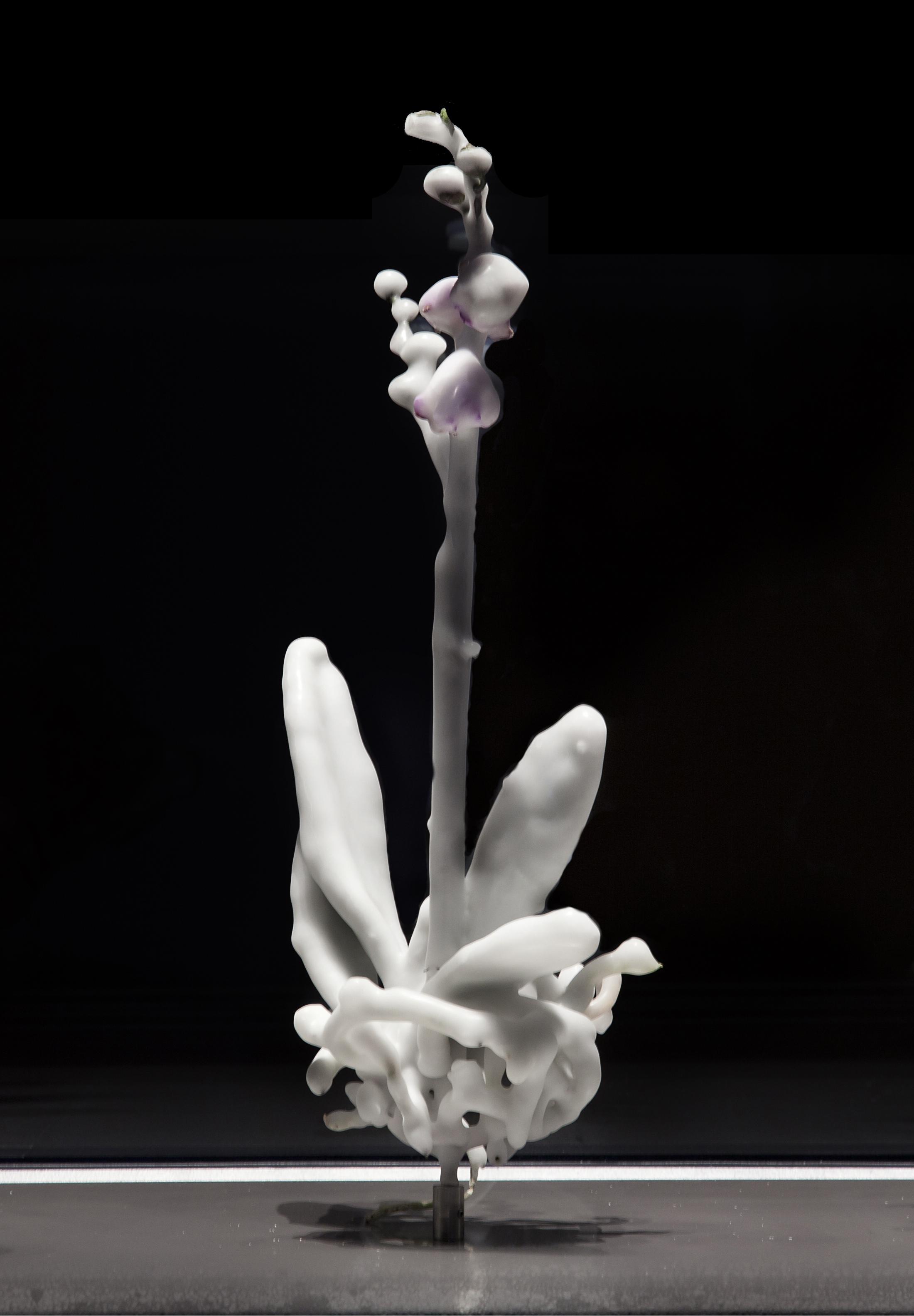

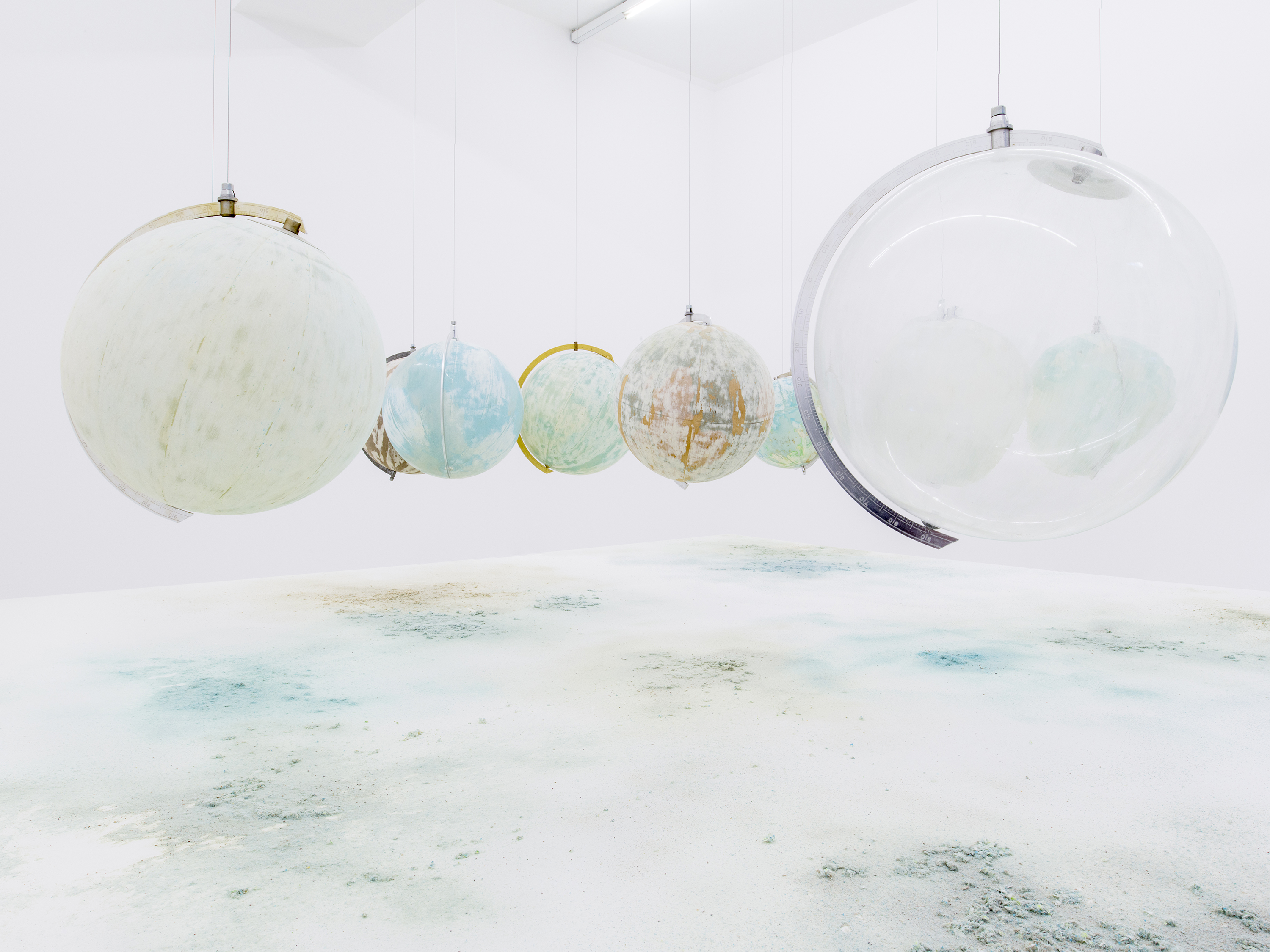
Julian Charrière We Are All Astronauts, 2013 Found globes made of glass, plastic, paper and wood, steel base with MDF board, dust from globes surface and international mineral sandpaper Dimensions variable Courtesy Collection Musée Cantonal des Beaux-ArtsInstallation view at Centre Culturel Suisse, Paris, France, 2014 Photograph: Martin Argyroglo
